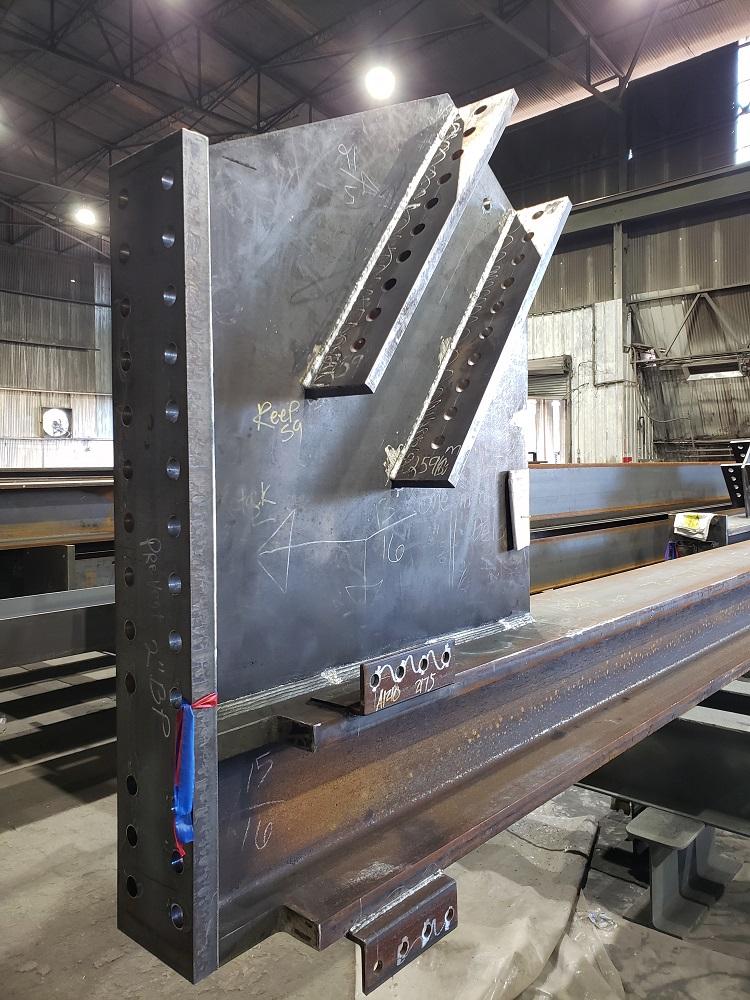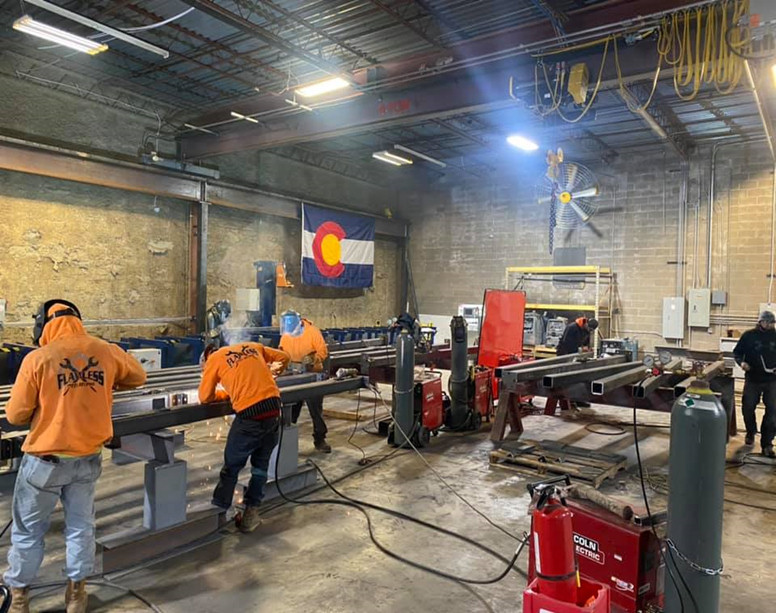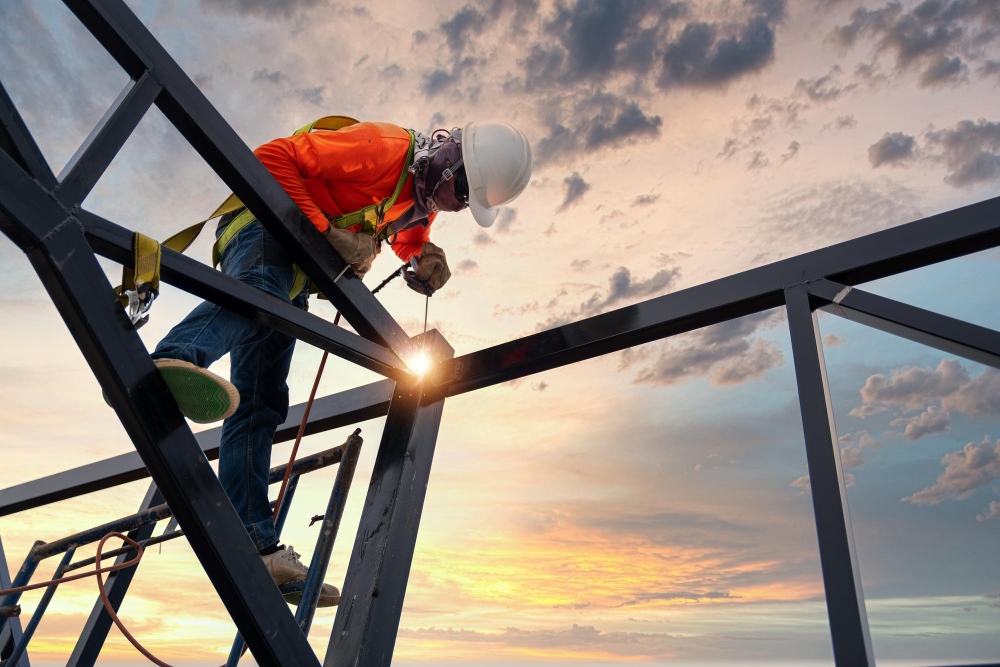Cutting-edge Patterns in Steel Construction: Enhancing Resilience and Accuracy
In the realm of steel construction, the search of resilience and accuracy has actually caused a wave of innovative trends that are reshaping the market. From developments in welding innovations to the assimilation of robotic automation in construction processes, the landscape of steel production is advancing quickly. High-strength alloy advancement, coupled with the use of 3D modeling and simulation software, is pushing the boundaries of what is attainable in terms of structural stability and accuracy. Furthermore, the growing emphasis on lasting practices in steel manufacturing is not just driving efficiency yet likewise fostering an extra ecologically aware strategy to manufacture. These patterns are not just shaping the present but additionally laying the foundation for the future of steel manufacture, promising additional improvements in sturdiness and precision.
Advanced Welding Technologies
In the world of steel manufacture, the fostering of sophisticated welding modern technologies has actually significantly changed the market's technique to attaining remarkable high quality and precision in structural welds. Advanced welding modern technologies, such as laser beam welding and friction mix welding, have arised as game-changers in the area. By leveraging these sophisticated welding techniques, steel fabricators can raise the toughness, toughness, and accuracy of their architectural welds, satisfying the increasingly requiring needs of modern construction tasks.
Robot Automation in Construction
Accepting robotic automation has actually become a foundation of modern-day steel construction techniques, improving and enhancing procedures efficiency throughout the industry. Robots are reinventing the means steel components are manufactured, using unparalleled precision and speed while minimizing human mistake. These automated systems can take care of repetitive tasks with consistent precision, causing better final result.
One key advantage of robotic automation in steel fabrication is the ability to work around the clock without tiredness, substantially boosting manufacturing result. This continual procedure decreases downtime and increases task timelines, inevitably conserving prices for suppliers. In addition, robotics can be configured to do complex jobs that may be dangerous or challenging for human employees, boosting security in the work environment.
Additionally, robotic automation allows seamless combination with various other electronic innovations, such as computer-aided layout (CAD) software and Web of Points (IoT) systems (steel fabrication melbourne). This interconnected strategy enhances communication in between various stages of construction, enhancing operations and guaranteeing real-time tracking and control. As the steel manufacture industry continues to develop, robot automation attracts attention as a transformative force driving efficiency and precision in producing procedures

High-Strength Alloy Advancement
The innovation of high-strength alloy growth in steel manufacture is improving the sector's strategy to boosting product durability and performance. High-strength alloys are crafted to show premium mechanical properties, such as increased tensile strength, toughness, and corrosion resistance contrasted to typical steel qualities. By including these sophisticated alloys into construction processes, producers can create components that withstand greater stress and anxiety degrees and extreme atmospheres, resulting in more sturdy and trusted output.
One key advantage of high-strength alloy advancement is the capability to reduce product thickness without compromising architectural stability. This not only causes lighter-weight elements but additionally adds to cost financial savings and improved efficiency in construction and setting up processes. The improved strength-to-weight proportion of these alloys enables for the layout and building of frameworks with higher load-bearing abilities while reducing total weight.
3D Modeling and Simulation Software Application
Advancements in steel construction procedures have been dramatically pushed by the assimilation of advanced 3D modeling and simulation software program tools. These devices allow producers to develop comprehensive online versions of their projects, enabling them to envision the final product with accuracy prior to any manual labor starts. By simulating different stress factors, ecological conditions, and architectural lots, makers can maximize designs for enhanced longevity and efficiency. Furthermore, 3D modeling and simulation software application simplify the production procedure by recognizing prospective problems beforehand, minimizing the requirement for pricey rework and reducing material waste.

Lasting Practices in Steel Manufacturing
Including sustainable practices right into steel manufacturing processes is vital for decreasing ecological effect and making sure long-term resource schedule. One key sustainable method is the fostering of energy-efficient technologies to reduce greenhouse gas emissions throughout the steel production process. This consists of making use of renewable resource resources, such as solar or wind power, to power steel plants and executing energy-efficient devices to maximize power usage.
An additional crucial element of sustainable steel manufacturing is the accountable sourcing of raw products. This includes making certain that the iron ore and other resources used in steelmaking are acquired from eco pleasant and honest sources. By promoting openness in the supply chain and adhering to rigorous environmental requirements, steel producers can decrease the adverse effects of source extraction on neighborhood communities and communities.

Verdict
To conclude, the cutting-edge trends in steel fabrication such as advanced welding technologies, robotic automation, high-strength alloy growth, 3D modeling and simulation software application, and lasting methods are boosting the resilience and precision of steel products. These developments are reinventing the steel construction Continue market by boosting sustainability, performance, and top quality. It is clear that the future of steel fabrication exists in embracing these advanced innovations to satisfy the needs of modern-day construction and manufacturing markets.
In the realm of steel manufacture, the quest of toughness and precision has led to a wave of cutting-edge patterns that are improving the sector.In the world of steel fabrication, the adoption of innovative welding technologies has actually dramatically changed the sector's method to accomplishing superior high quality and precision in architectural welds. As the steel manufacture sector continues to progress, robot automation stands out as a transformative pressure driving performance More Info and accuracy in making procedures.
Additionally, reusing and reusing steel scrap and waste products play a considerable role in enhancing the sustainability of steel production. metal fabrication melbourne.In final thought, the innovative trends in steel construction such as innovative welding innovations, robot automation, high-strength alloy advancement, 3D modeling and simulation software application, and lasting techniques are boosting the longevity and accuracy of steel items